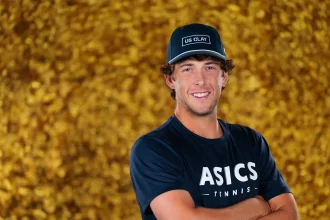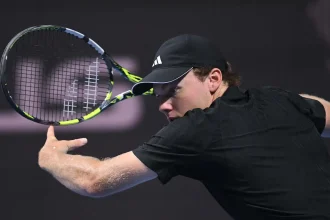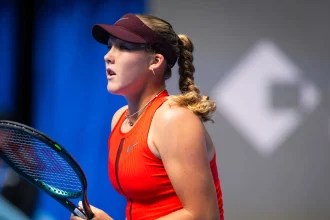The 2025 Platinum Performance/USEF Talent Search Finals East kicked off today at the historic Hamilton Farm, home of the USET Foundation, with a strong showing across the first two phases of competition. Thirty-seven horse-and-rider pairs took part in Phases I and II, setting the stage for an exciting weekend.
Leading the pack heading into Sunday’s final phases is Eleanor Rudnicki of Conroe, Texas, aboard Qwantreau. The pair earned a combined score of 239 to top the leaderboard after two phases. Qwantreau, a 2016 Belgian Warmblood gelding (Taran De La Pomme x R. Adermie), is owned by Sadie Leon.
In a notable update to this year’s format, judges Chris Kappler and Caitlin Venezia White introduced a revised flatwork phase designed to mirror the kind of warm-up riders would perform before entering the show ring. Each rider completed the flatwork test individually before transitioning directly into the gymnastics phase.
The flatwork section focused on suppleness and rideability, requiring movements such as collected, working, and lengthened trot and canter, a walk and back exercise, counter canter, and a trotting figure eight. This phase aimed to lay the groundwork for the more technical gymnastics section that followed.
Phase II challenged riders to deliver a forward, balanced, and accurate performance over a series of gymnastic exercises. With a 1.5 multiplier applied to the scores, this phase proved pivotal. Rudnicki and Qwantreau excelled, earning a standout score of 96—the highest gymnastics score of the day.
Just behind in second place is Baylee Rowan of Little Compton, Rhode Island, riding Watermelon, a 2016 KWPN gelding (Connect x Happy Wiggy) owned by Missy Clark. The pair earned the highest score in the flat phase—a 97—and hold a combined total of 235.
Parker Peacock of Pfafftown, North Carolina, sits in third on a 234.5 with Caelus, a 2017 Oldenburg gelding (Casiro I x Eva) owned by Abigail Phillips. The duo scored 92 in the flat and 95 in gymnastics.
Competition continues Sunday, October 5, at 9:00 a.m. ET with Phases III and IV. Phase III features a traditional jumper-style course set at 1.15m, testing each rider’s precision, technique, and ability to ride forward with effectiveness. Scores from this round are doubled, determining the top four riders who will then advance to the final ride-off.
In the concluding Phase IV, the top four competitors will swap horses and ride a shortened course, with their final performances deciding the overall placings.














